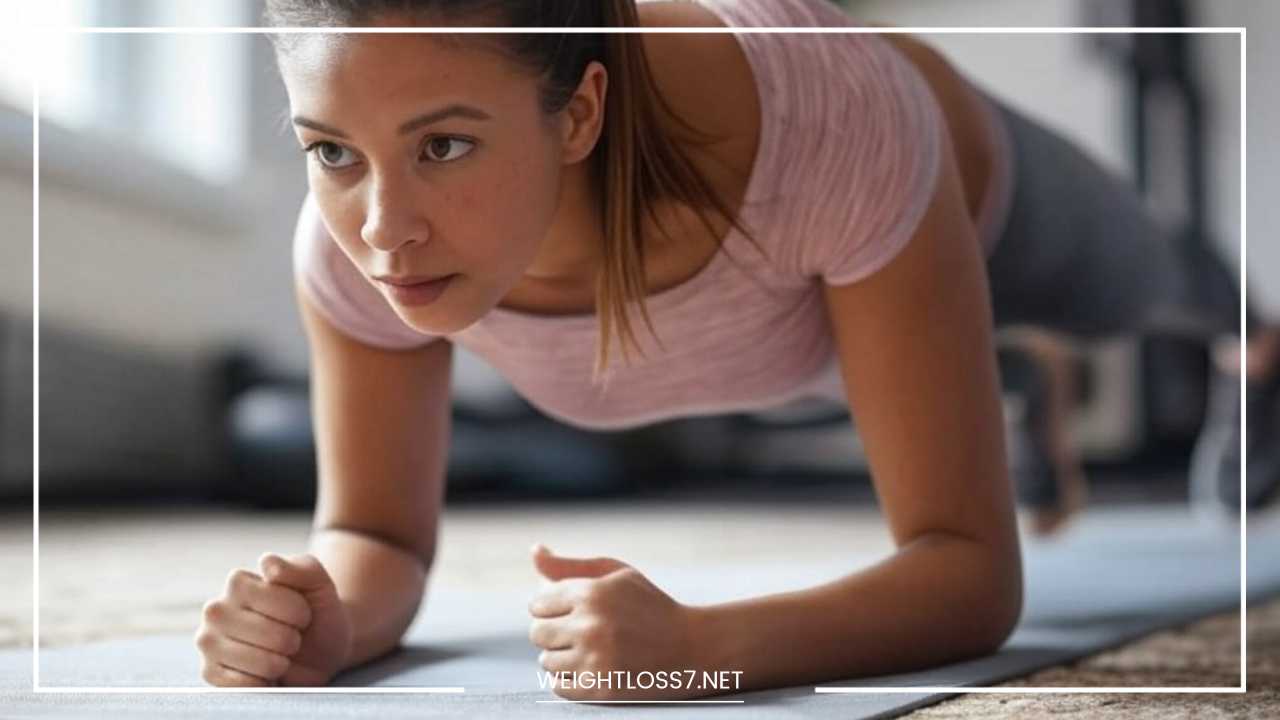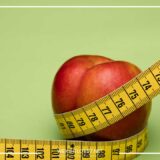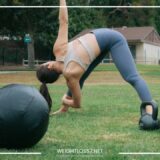Core Exercises for Women

Core Exercises for Women
Core Exercises for Women: A Comprehensive Guide to Strength and Stability
A strong core is the cornerstone of overall fitness and well-being for women of all ages. It’s not just about achieving a flat stomach—it’s about strengthening the muscles that support your spine, pelvis, and abdomen, which in turn improves your posture, balance, and movement.
A robust core enhances physical performance, reduces the risk of injuries, and improves your overall quality of life.
This comprehensive guide covers core exercises for women, catering to different fitness levels and age groups, including considerations for women over 40, 50, 60, and 70.
Understanding the Core
When we talk about the “core,” we refer to more than just the abdominal muscles. The core is a complex network of muscles that work together to stabilize and protect the spine, pelvis, and torso during all types of movements.
These muscles are not limited to your abs—your entire trunk is involved. Understanding the core is vital to knowing how to strengthen it effectively.
The key muscles in the core include:
- Rectus Abdominis: The well-known “six-pack” muscles that run vertically along the front of the abdomen. These muscles help with spinal flexion and are involved in many everyday movements like bending forward.
- Obliques: These muscles, located on the sides of the abdomen, help with rotation, side bending, and lateral flexion. They play a crucial role in stabilizing the torso during twisting movements.
- Transverse Abdominis: Often referred to as the body’s natural corset, this is the deepest abdominal muscle, wrapping around your torso. It plays a critical role in providing spinal stability and support.
- Erector Spinae: A group of muscles that run along the length of your spine, these muscles are responsible for maintaining posture and spinal extension.
- Pelvic Floor Muscles: A group of muscles at the base of your pelvis, which support the pelvic organs and are critical for urinary continence and pelvic health, especially after childbirth or during menopause.
The Benefits of a Strong Core
Developing a strong core offers a multitude of benefits, both for your body and your daily life. The core is integral to almost every movement you make, and its strength influences not only fitness performance but also overall functional abilities. Here are some of the top benefits of having a strong core:
1. Improved Posture
A strong core helps you maintain proper spinal alignment, reducing slouching or misalignment that can lead to chronic back pain.
A stable and engaged core supports good posture by keeping your spine upright and preventing excessive curvature.
2. Enhanced Balance and Stability
Core muscles play a significant role in stabilizing your body. Whether you’re standing, walking, or engaging in physical activity, your core is constantly working to keep you balanced.
A strong core helps you stay steady, reducing the risk of falls, especially as you age.
3. Injury Prevention
Having a robust core helps protect your spine, lower back, and pelvis, reducing the risk of injuries during exercise or daily activities.
A strong core helps distribute the forces from physical activities more evenly, alleviating stress on other parts of your body and decreasing the likelihood of overuse injuries.
4. Better Athletic Performance
In any sport, a strong core is crucial for generating power, transferring force, and maintaining stability.
Whether you’re running, cycling, swimming, or engaging in weightlifting, your core works in tandem with your limbs to provide the force needed for optimal performance.
5. Easing Daily Tasks
Daily activities such as lifting groceries, bending to pick up objects, or reaching for something overhead require core strength.
A strong core allows you to perform these tasks with more ease and less risk of injury.
Core Exercises for Women
Core exercises vary in difficulty and can be tailored to your fitness level. Below, we outline a series of exercises to progressively strengthen the core.
The exercises are categorized into three levels: beginner, intermediate, and advanced.
Beginner Core Exercises
If you’re new to core training, start with these foundational exercises that focus on engaging and activating the core muscles.
- Pelvic Tilts
Lie on your back with knees bent and feet flat on the floor. Place your hands on your lower abdomen or along the sides of your body for awareness. Gently tilt your pelvis forward and backward by engaging your abdominal muscles, pressing your lower back into the floor, then releasing it. This simple movement activates your core and builds awareness of your pelvic floor. - Dead Bug
Lie on your back with your arms extended toward the ceiling and knees bent at 90 degrees. Slowly lower your right arm and left leg toward the floor while maintaining contact with the floor with your lower back. Return to the starting position and repeat with the opposite arm and leg. This exercise strengthens the deep core and helps develop coordination. - Bird Dog
Begin on your hands and knees with your hands aligned under your shoulders and knees under your hips. Slowly extend your right arm forward and left leg backward, keeping your core engaged and your back flat. Return to the starting position and repeat with the opposite arm and leg. This exercise is great for activating the entire core while improving balance and stability. - Plank
Get into a push-up position but lower yourself onto your forearms. Your body should form a straight line from head to heels, and your core should be actively engaged throughout. Hold for 30 seconds to 1 minute, gradually increasing your hold time as your core strengthens. - Glute Bridge
Lie on your back with knees bent and feet flat on the floor. Press your feet into the floor and lift your hips toward the ceiling, engaging your glutes and core. At the top of the movement, squeeze your glutes and hold for a few seconds before slowly lowering your hips back down.
Intermediate Core Exercises
Once you’ve mastered the basic core movements, you can increase the intensity with these intermediate exercises that challenge your stability and coordination.
- Russian Twist
Sit on the floor with your knees bent and feet flat, leaning back slightly to engage your core. Hold a weight or medicine ball with both hands, and twist your torso to the right, then to the left, while keeping your feet slightly off the ground. This exercise targets the obliques and helps improve rotational stability. - Bicycle Crunch
Lie on your back with hands behind your head and knees bent. Bring your right elbow toward your left knee while extending your right leg. Switch sides by bringing your left elbow to your right knee. This exercise engages both the rectus abdominis and obliques while enhancing coordination. - Side Plank
Lie on your side with your forearm on the floor and legs stacked. Lift your hips toward the ceiling, forming a straight line from head to heels. Hold the position for 30 seconds to 1 minute, focusing on engaging the core and preventing any sagging in the hips. - Reverse Crunch
Lie on your back with knees bent at a 90-degree angle. Slowly curl your hips toward your chest, using your lower abdominal muscles to lift your hips off the floor. Return to the starting position and repeat. This exercise focuses on strengthening the lower abdominals. - Superman
Lie on your stomach with your arms extended in front of you and legs straight. Lift both your arms and legs off the ground, keeping your core engaged, and hold for a few seconds before returning to the starting position. This move strengthens the erector spinae and engages the glutes and lower back.
Advanced Core Exercises
For advanced practitioners, these exercises are more challenging and require a higher level of coordination, strength, and endurance.
- Hollow Body Hold
Lie on your back with your arms extended overhead and legs straight. Lift your shoulders and legs off the floor, keeping a slight curve in your lower back. Engage your core and hold the position for as long as possible. This is a challenging move that requires strong abdominal and lower back muscles. - Pallof Press
Stand sideways to a cable machine or resistance band anchored at chest height. Hold the handle or band with both hands at chest level. Step away from the anchor point to create tension in the band. Press the handle away from your chest while resisting the rotational force, engaging your core throughout the movement. This exercise targets the transverse abdominis and obliques. - Stability Ball Rollout
Kneel in front of a stability ball with your forearms resting on the ball. Slowly roll the ball forward by extending your arms, keeping your core tight and back neutral. Engage your core to return to the starting position. This exercise builds core strength and stability while targeting the abs and lower back. - Hanging Leg Raise
Hang from a pull-up bar with your arms extended. Using your core muscles, raise your legs toward the ceiling while keeping your body as still as possible. This movement targets the lower abdominals and improves core stability. - Dragon Flag
Lie on your back with arms overhead and legs extended. Lift your hips and legs off the floor, keeping your body straight from head to heels. Lower your body in a controlled manner without letting your back touch the floor. This advanced move requires significant core strength and control.
Core Exercises with Weights
Incorporating weights into core exercises can increase the intensity and provide additional strength gains.
These exercises help target the deep core muscles while also challenging the stabilizing muscles in the torso. Examples of weighted core exercises include:
- Dumbbell Russian Twist
Perform the Russian twist while holding a dumbbell or kettlebell for added resistance. This exercise engages the obliques while challenging the core to resist rotational forces. - Dumbbell Plank
Hold a dumbbell in one hand while performing a traditional plank. The added weight creates an imbalance that forces your core to work harder to maintain stability. - Medicine Ball Sit-Up
Hold a medicine ball or dumbbell while performing a traditional sit-up. The added weight increases the intensity of the exercise and targets the rectus abdominis and obliques. - Kettlebell Swing
Swing a kettlebell between your legs and up to shoulder height, engaging your core to stabilize your body during the movement. This exercise is excellent for developing both core strength and hip stability. - Barbell Squat
While primarily a lower-body exercise, squats engage the core for stability and support, particularly when performing weighted squats with a barbell across your shoulders. A strong core is crucial for maintaining proper form and balance.
Core Exercises for Women Over 40, 50, 60, and 70
As women age, specific considerations become necessary when performing core exercises. Factors like muscle loss, joint health, and hormonal changes all play a role in how we train our bodies as we get older.
Below are age-specific recommendations for women over 40, 50, 60, and 70.
Women Over 40
In your 40s, maintaining core strength is crucial for overall health. This is the age when muscle mass tends to decrease, and posture issues such as rounded shoulders or slouching may begin to surface.
Core exercises should focus on improving posture, strengthening the pelvic floor, and maintaining flexibility.
Incorporating exercises like yoga, Pilates, or resistance training can be highly beneficial during this stage.
Women Over 50
At 50 and beyond, women experience changes in muscle mass, bone density, and hormone levels. It’s important to include core exercises that promote joint stability, balance, and bone health.
Weight-bearing exercises like squats and planks are beneficial, as they help strengthen bones and improve stability.
Modifications for joint pain or stiffness may be necessary, so always listen to your body and adjust accordingly.
Women Over 60
By the time you reach your 60s, maintaining functional strength and balance becomes even more critical.
Low-impact exercises such as seated core work, resistance band exercises, or chair yoga can provide significant benefits without putting undue stress on the joints.
These exercises promote stability and help prevent falls. Focus on exercises that improve coordination and balance, as these will help you maintain independence in daily life.
Women Over 70
At 70 and beyond, safety is paramount. It’s essential to focus on exercises that promote functional strength, enhance balance, and prevent falls.
Core exercises should be gentle and low-impact, emphasizing support for daily movements. Simple exercises like chair squats, gentle twists, and seated leg raises can make a big difference.
Always consult with a healthcare provider before beginning a new fitness routine to ensure it’s safe for you.
Tips for Effective Core Training
- Prioritize Form
Proper form is crucial to avoid injury and maximize the effectiveness of each exercise. Avoid rushing through movements and focus on maintaining proper alignment throughout. - Engage Your Core
During every core exercise, consciously engage your core muscles by drawing your belly button toward your spine. This increases the efficiency of each movement. - Breathe Properly
Breathing properly during core exercises helps ensure you maintain control. Exhale during the effort phase and inhale during the recovery phase to maintain steady and controlled breathing. - Gradually Increase Intensity
Start with beginner exercises and gradually progress to more challenging movements as your core strength improves. This helps reduce the risk of injury and ensures your muscles are continuously challenged. - Listen to Your Body
If any exercise causes pain or discomfort, stop immediately and consult a healthcare professional. Core exercises should never be painful—only challenging. - Be Consistent
Consistency is key to building a strong core. Aim to perform core exercises at least two to three times per week for optimal results.
Final Thoughts
A strong core is essential for women of all ages. From improving posture to enhancing athletic performance and making daily activities easier, the benefits of core training cannot be overstated.
Whether you’re in your 20s or your 70s, there are core exercises that can help you achieve your fitness goals and maintain a healthy, active lifestyle.
By focusing on proper form, engaging your core muscles, and progressing gradually, you’ll build a strong foundation that supports your body in every aspect of life.

















